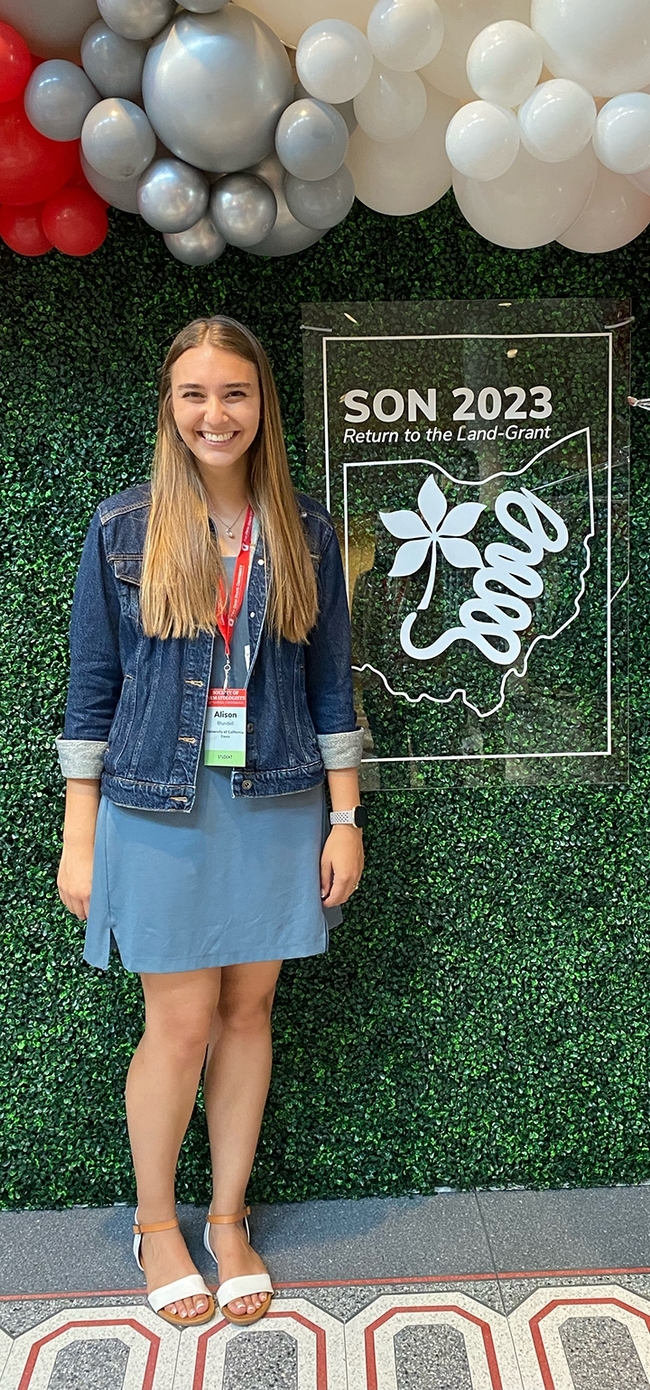
- Alison Coomer Blundell, who will be a fourth-year doctoral candidate in Plant Pathology this fall, won first place in the three-minute student competition with her presentation on “Trade Offs Between Resistance Breaking and Fitness Cost in Root-Knot Nematodes.” She received a $250 award and a plaque.
- Ching-Jung Lin, who will be a fourth-year doctoral student this fall, won second place in the 12-minute category with her presentation on "Elucidating the Role of MigPSY Peptides in Interactions Between Plants and Root-Knot Nematodes." She received a $250 prize.
- The six-member Siddique lab team, "Meloidogyne Gang Gang," which included Blundell, Lin, third-year doctoral student Pallavi Shakya, and second-year doctoral student Veronica Casey, tied for second place in the Cobb Bowl, a jeopardy-like competition that can include both students and postdoctoral fellows on the teams.
The University of Idaho team, one of six teams competing, won the Cobb Bowl. The study material is based on six decks of nematode trading cards created by Jon Eisenback, professor in Virginia Tech's School of Plant and Environmental Sciences. He also hosted the game as "SmartAlex EisenTrebeck." He asked questions in the form of an answer, such as:
- Question: "The Guava root-knot nematode."
Answer: "Meloidogyne enterolobii" - Question: "First report of root-knot nematodes."
Answer:"Who is Miles Joseph Berkeley?"
"The most difficult question, said team member Veronica Casey was: "The color of the first edition of the Journal of Nematology."
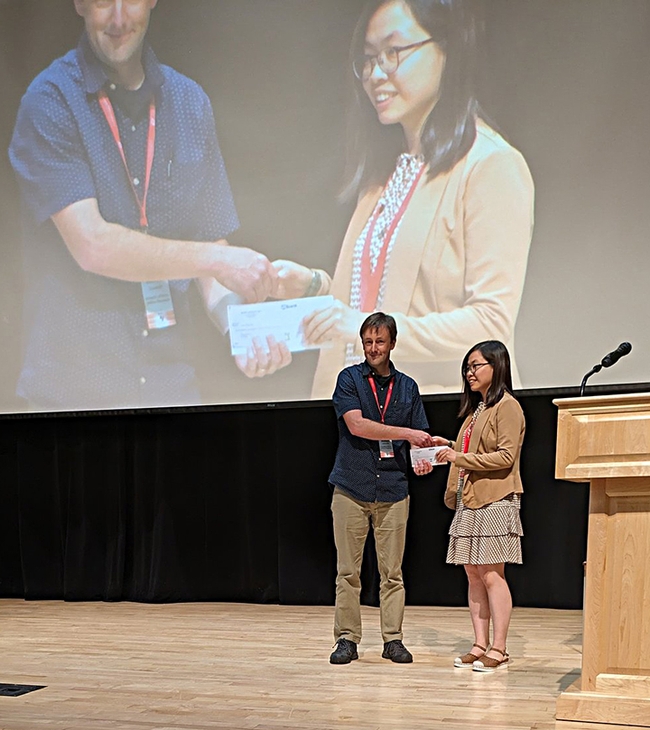
Also at the SON meeting, Siddique participated in a session titled "Nematology Faces of the Future." In his five-minute self-introduction, he displayed a map showing how far he has traveled. A native of Multan, Pakistan, he received two degrees in Multan: his bachelor of science degree from the Government College Bosan Road in 2001 and his master's degree in botany from the Bahauddin Zakariya University in 2004. Then it was off to Vienna, Austria to receive his doctorate in 2009 in agriculture and biotechnology from the University of Natural Resources and Life Sciences. After serving as a research group leader for several years at the University of Bonn, Germany, he joined the UC Davis Department of Entomology and Nematology faculty in 2019 as an assistant professor and advanced to associate professor this year.
"Plant-parasitic nematodes are destructive pests causing losses of billions of dollars annually," Siddique says on his website. "Economic, health, and environmental considerations make natural host plant resistance a preferred strategy for nematode control, but there are limitations to this approach. In many cases, the resistance conferred by resistance genes is partial, and some of the nematodes are able to survive. Similarly, nematode resistance genes are often effective against only one or a few species, whereas plants are exposed to several pathogens in the field. Another concern is the emergence of pathotypes that can overcome resistance. In view of all these limitations, it is important to identify additional mechanisms and tools that can be used to develop novel and sustainable approaches to the management of nematodes."
The Siddique lab focuses its research "on basic as well as applied aspects of interaction between parasitic nematodes and their host plants. The long-term object of our research is not only to enhance our understanding of molecular aspects of plant–nematode interaction but also to use this knowledge to provide new resources for reducing the impact of nematodes on crop plants in California."
Attached Images:
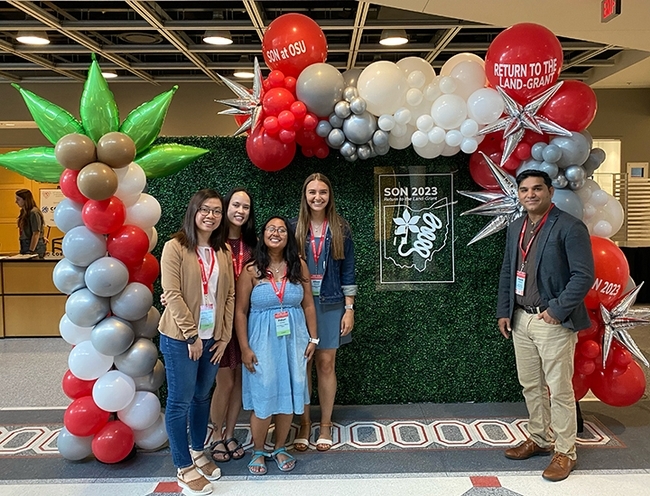
The UC Davis Shahid Siddique lab excelled at the international Society of Nematologists' 62nd annual meeting, held in Columbus, Ohio. Pictured with Siddique are doctoral students in his lab. From left are Ching-Jung Lin, Veronica Casey, Pallavi Shakya and Alison Coomer Blundell, all award winners.
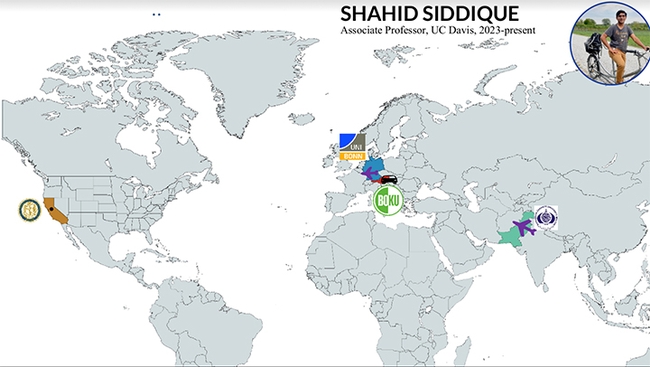
UC Davis nematologist Shahid Siddique participated in a session titled "Nematology Faces of the Future" and presented this graphic showing his career stops.
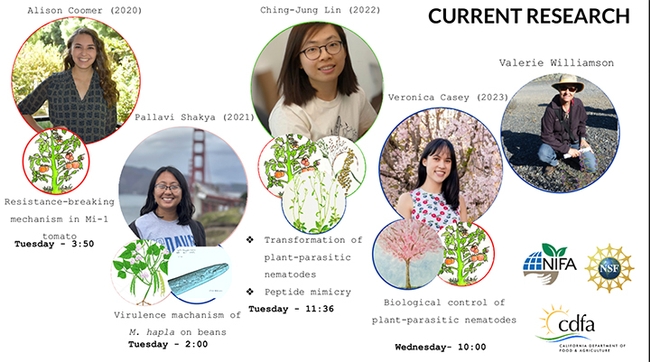
Nematologist Shahid Siddique discussed the research underway in his lab at the Society of Nematologists' meeting in Columbus, Ohio.